
Background information
Preview: Sonic Racing Crossworlds impresses with its crazy teleportation and karts
by Domagoj Belancic
PS4, Xbox and Switch can pack their bags. Nothing can match the addictive potential of Peter Zumstein's self-built arcade machines. His hobby takes retro gaming to a whole new level.
The first thing that catches my eye in Peter's flat is a large display cabinet. He exhibits true-to-scale replicas of spaceships, phasers and everything else the sci-fi heart desires. This makes the 50-year-old even more likeable than he already is to me. I would love to talk shop with him at length about his models from Star Trek and Babylon 5. Or about the Terminator head on the desk in his office.
Video producer Stephanie Tresch and I didn't travel to Aargau for this reason. We are visiting Peter because of a previous encounter and his unearthly cool hobby; he builds arcade machines.
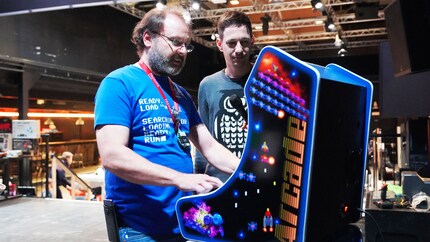
Flashback: At the Vintage Computer Festival in Zurich last year, we meet Peter and fall in love with his hobby. Peter works in the administration department of a construction company. When he's not working on a new arcade machine in the garage in his spare time, you can meet him at FedCon, TreWa Con or at VCFe. Of course, Peter always brings an arcade machine with him. In Zurich, this is immediately taken over by the children present. Much to the horror of the adults, who are just as keen to finally press the original buttons again.
Luckily, we can now visit Peter in person and game extensively on the machine without having to chase the children away first.
Before there were consoles - from the end of the 70s - playing games in the arcade was commonplace. Space Invaders, PacMan and Donkey Kong captivated the youth of the time so much that there were soon arcade machines everywhere. Of course, they were a good source of income. Peter gambled away some of his pocket money at Zurich Airport. Right there under the escalator where coffee is served today. Games like Starship, Star Castle or Star Hawk unfortunately had to make way for Starbucks long ago.
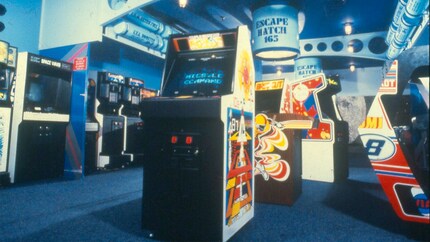
However, arcade machines never completely disappeared. And this is despite the fact that, from today's perspective, the games of the time have less sophisticated graphics. But the gameplay is all the more entertaining. Retro is not only popular with the youth of the time. This is also the reason why you can even buy fix-finished arcade machines in our shop. However, these are not half as interesting in terms of design, workmanship and software (scope of games) as Peter's self-built machines. If you like the arcade feeling in your own four walls, you should do the same and make your own. But be careful, these things are addictive. A few months after Peter's brother received his arcade machine, he complained that he could hardly sleep because of it.
If you think Peter uses ready-made kits for his vending machines, you've got another think coming. Everything here is handmade. Whether it's technical drawings, the creative creation of design elements or the rendering of an initial 3D model.
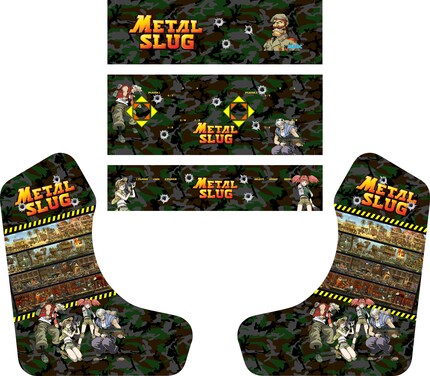
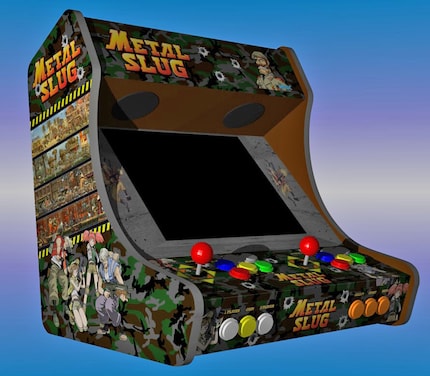
When creating the graphics, the wishes of the future owner are realised. The arcade machine is then not only given a design that matches the topic on the outside. It goes so far that even loading screens are customised to the respective topic. Incidentally, these did not exist in the past. The arcade machines of yesteryear only ran one game at a time.
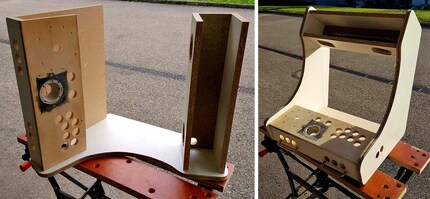
Peter builds the housing in his garage. He uses self-made templates, a saw and router to shape 16 mm chipboard. He uses 19 mm thick boards for the plinth. Depending on the desired operating concept, this work step involves more or less effort. For example, if you want to install a trackball instead of a second joystick, the plans have to be adapted first.
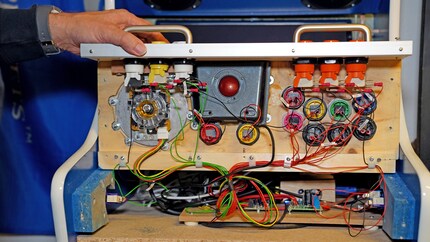
The customisation for the trackball entails a rat's tail in the subsequent work steps. When installing the trackball, Peter sawed it apart without further ado due to its excessive mass. Fortunately, no electronics were installed in the cut-off part. What impresses me about the wiring is that Peter takes the trouble to label the cables. This will help a future owner should he ever need to carry out a repair.

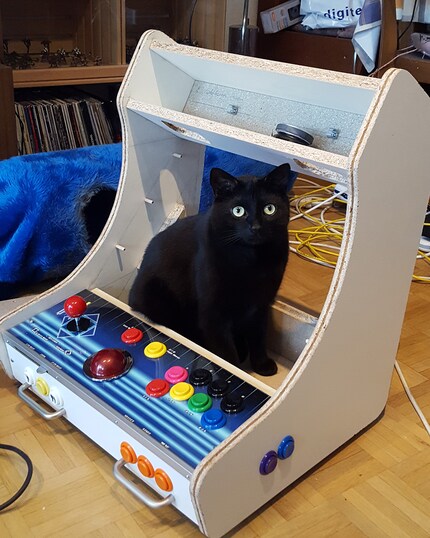
As you can see, Peter has built an additional element, a drawer, into this machine. In addition to the keyboard, it also contains a game controller. This allows you to play with two players despite the lack of a joystick. What you can't see in the pictures is the base. Of course, every machine comes with one of these.
By the way, Peter gets moral support during assembly from his pet cat. Like all cats, she likes to sit in boxes - or even in half-finished cases.
The arcade machines are powered by a Raspberry Pi 3 Model B. This is sufficient for most games. But there are also games that you can only play with an overclocked processor. That's why Peter has also installed a fan that switches on automatically when required. An old LCD monitor is used for the image output and a scanline generator is installed. The intermediate lines in the image structure must not be missing for a true-to-original gaming experience.
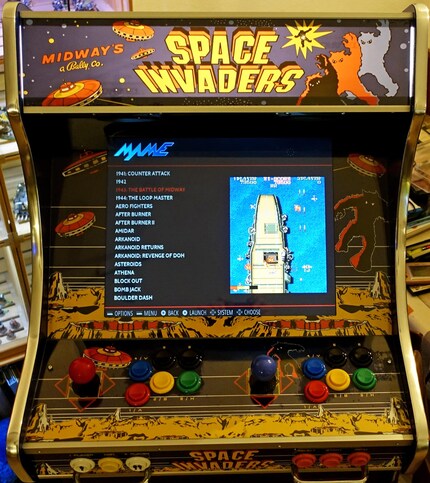
Peter relies on RetroPie for the software. The free software, which may not be used commercially, brings nostalgia back into the living room. It provides you with emulators for practically all retro games in the world. Whether it's arcade, C64, Amiga or Super Nintendo games, you can play everything. Provided you have the corresponding ROMs.
The material list for an arcade machine contains a total of 108 items, which Peter obtains from around ten different dealers. The cost per unit is around 1200 francs, not including labour hours.
If you would also like to build an arcade machine, but are put off by the amount of work involved or the cost, you should start small. The following arcade machine is fully functional and is also based on a Raspberry Pi. Its display measures just 0.96 inches.
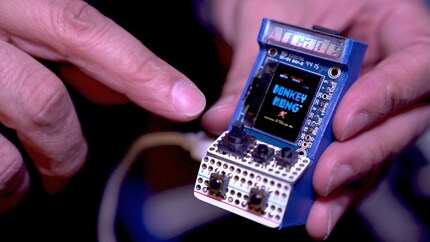
To play with it, you need very dexterous and small fingers and, at best, eagle eyes. Peter even had to get new glasses before assembling it. You can find more information about this Fitzel machine here.
If you're in the mood for more retro and arcade machines in particular, you can rejoice. Because I'm going to visit Peter again. I can't miss the construction of the Pac-Man machine mentioned in the video. If you don't want to miss it, click on "Follow author" below.
I find my muse in everything. When I don’t, I draw inspiration from daydreaming. After all, if you dream, you don’t sleep through life.
Interesting facts about products, behind-the-scenes looks at manufacturers and deep-dives on interesting people.
Show all
Background information
by Domagoj Belancic

Background information
by Michelle Brändle
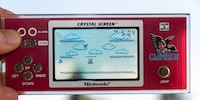
Background information
by David Lee